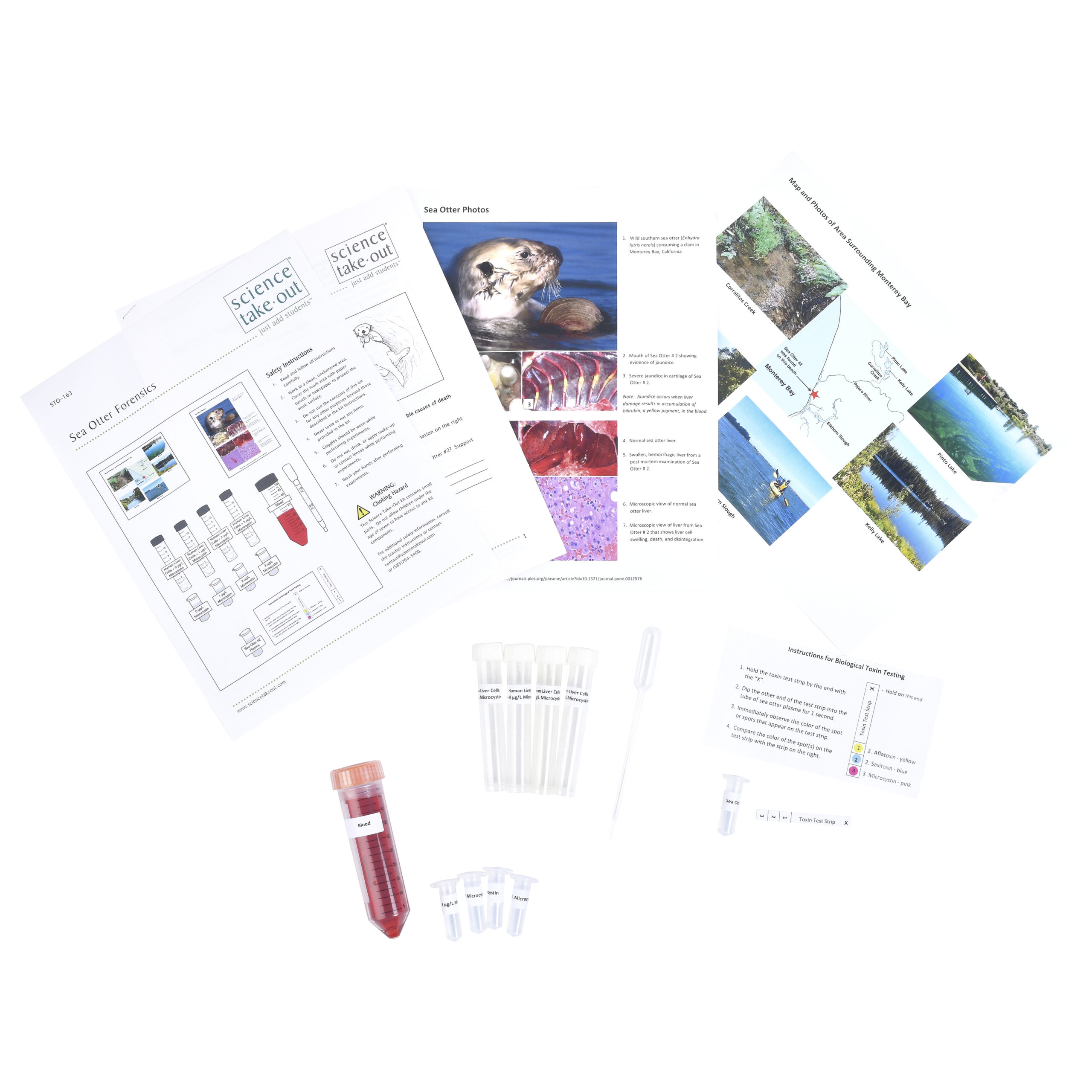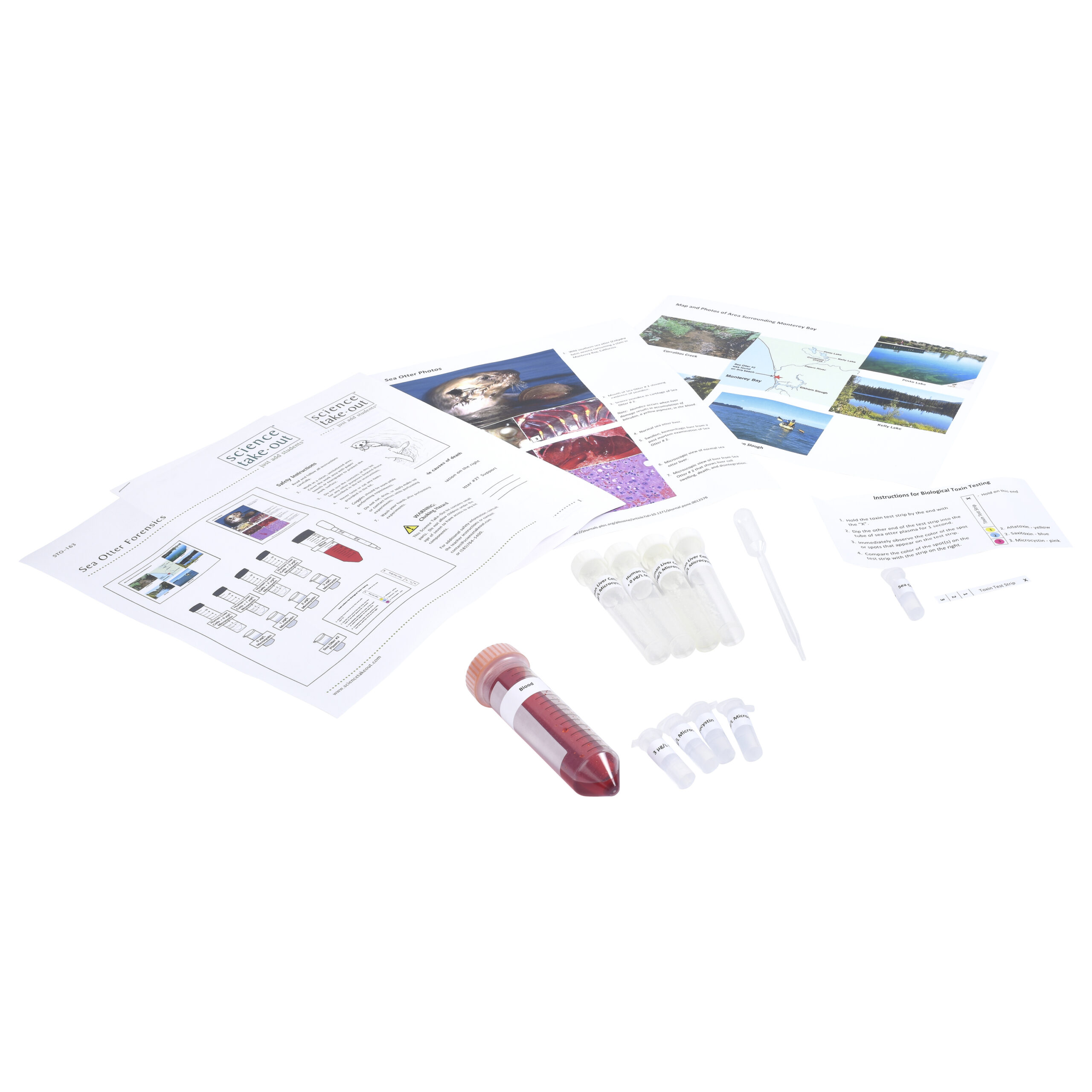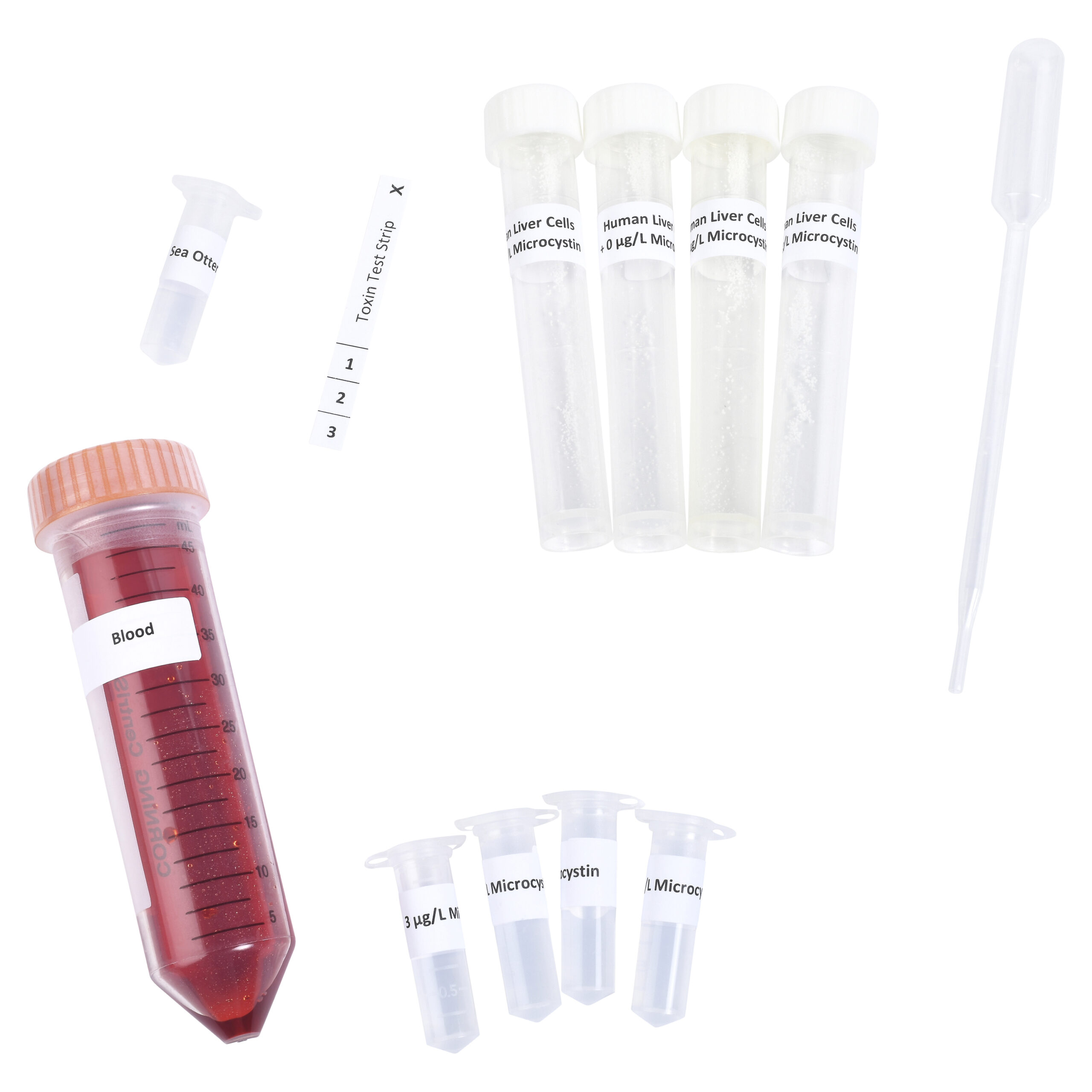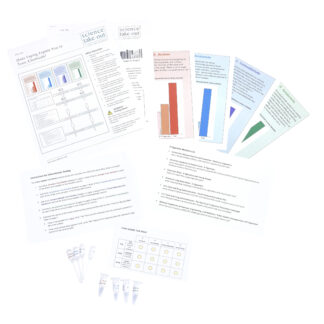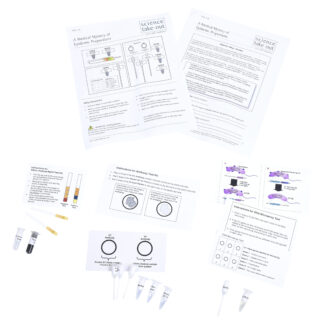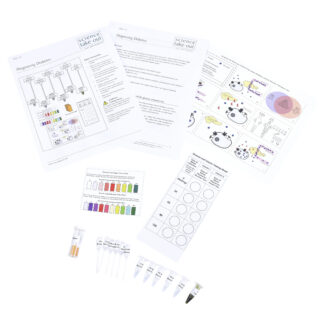Sea Otter Forensics
$18.95 – $152.95
Why are the sea otters dying?
Kit Includes
- Sea Otter Photos
- Sea Otter Plasma (simulated)
- Toxin Test Strip (simulated)
- Instructions for Biological Toxin Testing
- Map and Photos of Area Surrounding Monterey Bay
- Human Liver Cells (simulated)
- Blood (simulated)
- Microcystin (simulated)
- Dropper
Quantity Discounts
Kits:
- 1 – 9 kits: $18.95 each
- 10 – 24 kits: $18.00 each
- 25+ kits: $17.06 each
Unassembled:
- 1 – 9 packs: $152.95 each
- 10+ packs: $145.30 each
Refills:
- 1 – 9 packs: $38.95 each
- 10+ packs: $37.00 each
Correlation to Next Generation Science Standards (NGSS) Shop by NGSS »
Performance Expectations:
HS-LS2-6. Evaluate claims, evidence, and reasoning that the complex interactions in ecosystems maintain relatively consistent numbers and types of organisms in stable conditions, but changing conditions may result in a new ecosystem.
HS-LS2-4. Use mathematical representations to support claims for the cycling of matter and flow of energy among organisms in an ecosystem.
Science & Engineering Practices
Developing and Using Models - Develop, revise, and/or use a model based on evidence to illustrate and/or predict the relationships between systems or between components of a system.
Analyzing and Interpreting Data - Evaluate the impact of new data on a working explanation and/or model of a proposed process or system.
Disciplinary Core Ideas
LS2.C: Ecosystem Dynamics, Functioning, and Resilience - A complex set of interactions within an ecosystem can keep its numbers and types of organisms relatively constant over long periods of time under stable conditions. If a modest biological or physical disturbance to an ecosystem occurs, it may return to its more or less original status (i.e., the ecosystem is resilient), as opposed to becoming a very different ecosystem. Extreme fluctuations in conditions or the size of any population, however, can challenge the functioning of ecosystems in terms of resources and habitat availability.
LS2.B: Cycles of Matter and Energy Transfer in Ecosystems - Plants or algae form the lowest level of the food web. At each link upward in a food web, only a small fraction of the matter consumed at the lower level is transferred upward, to produce growth and release energy in cellular respiration at the higher level. Given this inefficiency, there are generally fewer organisms at higher levels of a food web. Some matter reacts to release energy for life functions, some matter is stored in newly made structures, and much is discarded. The chemical elements that make up the molecules of organisms pass through food webs and into and out of the atmosphere and soil, and they are combined and recombined in different ways. At each link in an ecosystem, matter and energy are conserved.
Crosscutting Concepts
Patterns - Different patterns may be observed at each of the scales at which a system is studied and can provide evidence for causality in explanations of phenomena.
Scale, Proportion, and Quantity - The significance of a phenomenon is dependent on the scale, proportion, and quantity at which it occurs.
